Measure S-Parameter of Nonlinear System
Use the S-Parameter Testbench block to measure the S-parameters of a nonlinear system. The system shown here includes a device under test (DUT) with a linear filter followed by a nonlinear amplifier. The system allows an external steady state input that is switched off initially. When the DUT is nonlinear, the stimulus signal created in the S-Parameter Testbench block must be small enough to operate in the linear region.

Set the S-Parameter Testbench block parameters as shown.
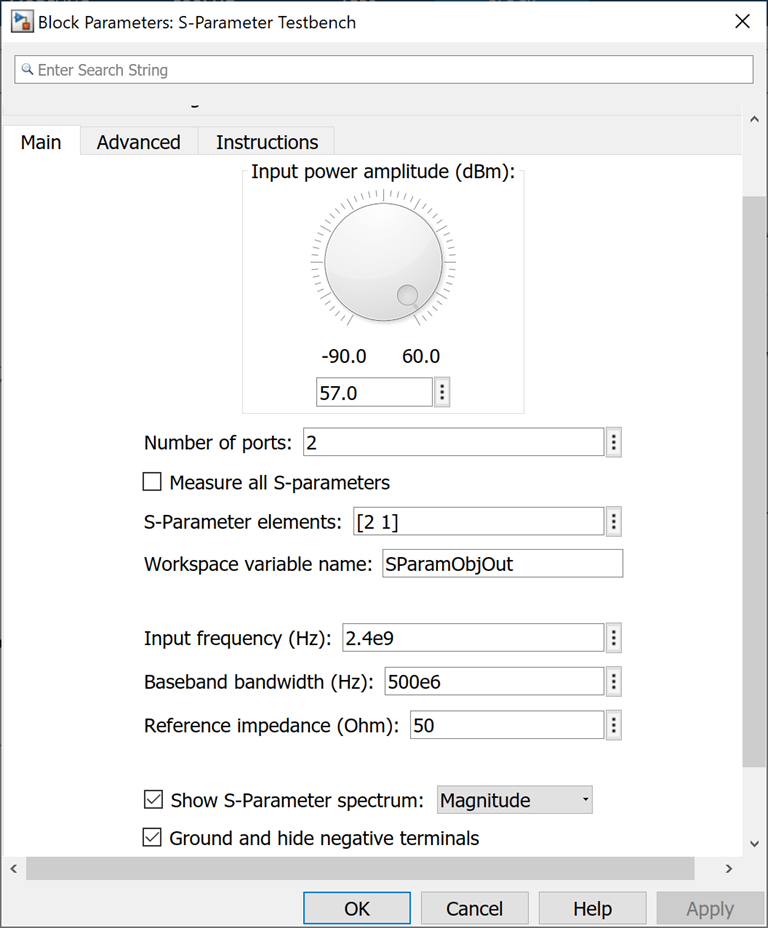
Select Run to display the output of the S-Parameter Testbench block which is the S21 magnitude.
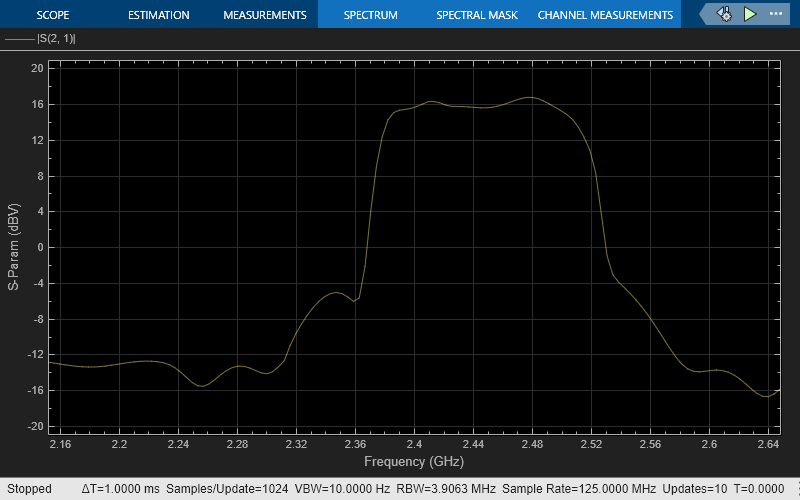
Open the mask parameters dialog box of the S-Parameter Testbench block and set the Input power amplitude (dBm) parameter to 15 dBm. You can also vary the Input power amplitude (dBm) parameter while the simulation is running. Rerun the simulation and observe the change in the magnitude of the S21 of the system.
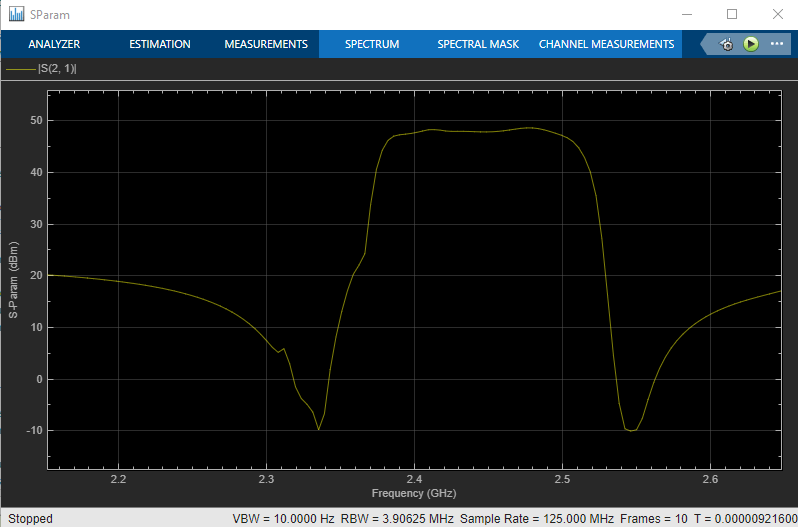
Note the difference between the results. When the input power is significant enough to excite the nonlinearity of the system, the dips in the spectrum of the filter fill up due to spectral regrowth. The simulation results are correct in both cases, but the initial S-parameter measurement is invalid due to nonlinearity.
While it is recommended that the stimulus signal be kept small when measuring S-parameter data, it is also possible to measure the S-parameter data with a small stimulus signal around a large signal operating point. To do this, set the switch to an input of 0.125 watts. In addition, in the Advanced tab in the block parameters dialog box of the S-Parameter Testbench block, select the Adjust for steady-state external signals parameter. This allows the testbench to first measure the output of the system with an external signal and then subtract the external signal from the output to ensure that only the small signal stimulus is accounted for in the calculation of the S-parameters.
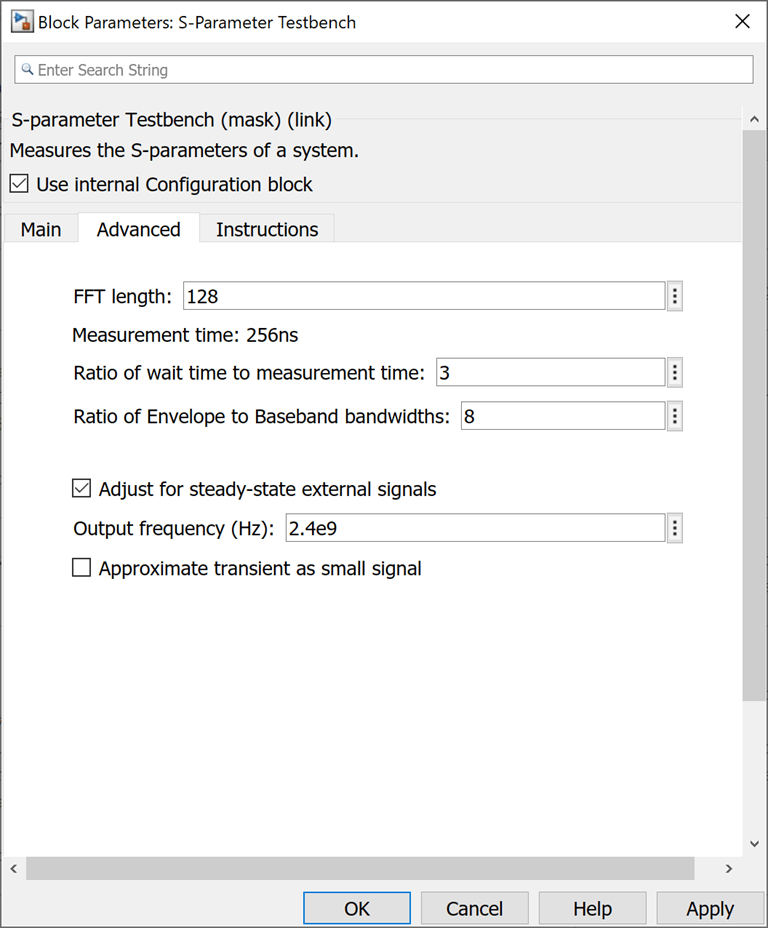
Rerun the simulation and observe the S21 magnitude.
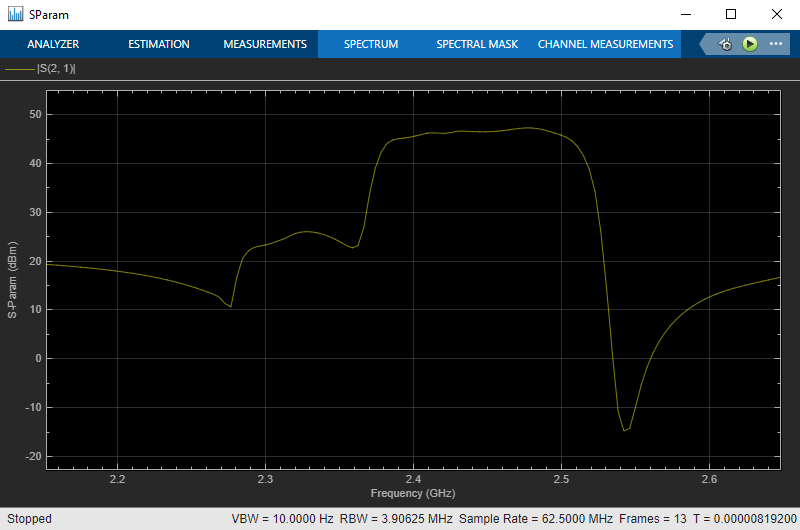
When you compare the result with a zero-watt external signal and a 0.125-watt signal, the effect of a large signal operation point is evident.